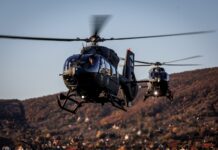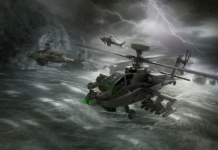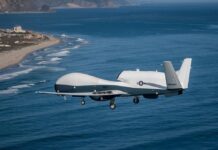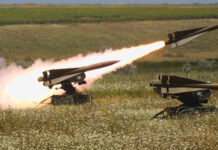The UK Ministry of Defence (MoD) published its Defence Drone Strategy on 22 February 2024, setting out how the UK defence establishment would “realise the significant opportunities and tackle challenges in uncrewed systems”.
Noting how the development and employment of unmanned aerial vehicles (UAVs) are demonstrating that “low-cost solutions are increasingly defeating more exquisite capabilities”, the strategy intends to harness the experience gained by Ukrainian forces in deploying UAVs donated by the UK and other nations.
“Having delivered thousands of logistic, surveillance, strike and maritime drones to Ukraine, the strategy sets out how Defence will learn from this important partnership for the operational capabilities of the Royal Navy, Royal Air Force and British Army, integrated by Strategic Command,” the MoD stated in a press release.
The MoD added that the core objectives of the strategy are to: “expedite the adoption of acquisition reform; build a resilient industrial base able to scale in a time of war; define digital and integration standards for seamless operational integration; and foster a culture of innovation to exploit technology at the leading edge and unleash the ingenuity of our people”.
In an introduction to the Defence Drone Strategy, UK Minister for Defence Procurement James Cartlidge stated, “Our approach to uncrewed systems will drive a more deliberate and coherent partnership with our industrial base, ensuring vital onshore resilience and component stockpiles. In close partnership with industry, we will spirally and collaboratively develop platforms and components to keep up with relentless cycles of battlefield adaptation, whilst driving sovereign industrial strength – and the export opportunities necessary to reinforce such resilience. We will also work across Government to foster a pro-innovation regulatory environment, delivering the ability for uncrewed military platforms to be tested as effectively as possible on UK sites, and within our sovereign airspace.”
The strategy document itself noted that the UK has “already provided thousands of uncrewed systems [to Ukraine], with our recent annual commitment of GBP 2.5 billion [EUR 2.92 billion] of military support to Ukraine continuing, including hundreds of millions to support logistic, surveillance, strike and maritime uncrewed platforms.
“We have learnt, and will continue to learn, important lessons relating to uncrewed technology from Russia’s illegal war in Ukraine, including developing and delivering long-range air and maritime strike uncrewed systems,” the strategy document noted. “Uncrewed systems are about much more than the platform – they rely on the deliberate integration of components, software and supporting networks. We have also learnt wider lessons for acquisition: the fast-paced nature of technological adaption alongside industry measured at times in weeks, challenging our traditional development and acquisition methods. This demands a shift in our procurement approach to deliver effective, interoperable and safe capabilities at pace.”
Outlining a vision for the UK to be “world leading in uncrewed defence systems”, the strategy document stated, “Our approach will be one of unparalleled collaboration and bold innovation. We already have a foundation of investment of over GBP 4.6 billion over the next 10 years on uncrewed capability, which we only expect to accelerate as these technologies advance. We intend to harness a culture of innovative delivery that swiftly brings research and development breakthroughs to the front line, maximises our people’s ingenuity, avoids unnecessary bureaucracy and captures the potential of our leading manufacturing, robotics and digital sectors.”
The strategy document states that the initial priority is “the successful delivery of the Ukraine-UK uncrewed systems initiative: a critical milestone in our strategic bilateral relationship. Alongside other strategic partnerships and coalition opportunities, we will continue to learn lessons from the front line, to catalyse spiral development and reduce unintended duplication. We will drive procurement at scale to meet the demands, both of our armed forces and those of Ukraine.”
On 15 February the UK MoD announced that it is joining Latvia in leading an initiative to deliver thousands of ‘first-person view’ UAVs to Ukraine.
“This is the first project to be launched from the GBP 200 million drone package announced by the Prime Minister in January this year,” the MoD stated at the time, adding that the initiative “will see the UK order thousands of FPV drones for Ukraine, including from UK manufacturers, providing a boost to the industry and delivering on the Prime Minister’s priority to grow the economy.”














